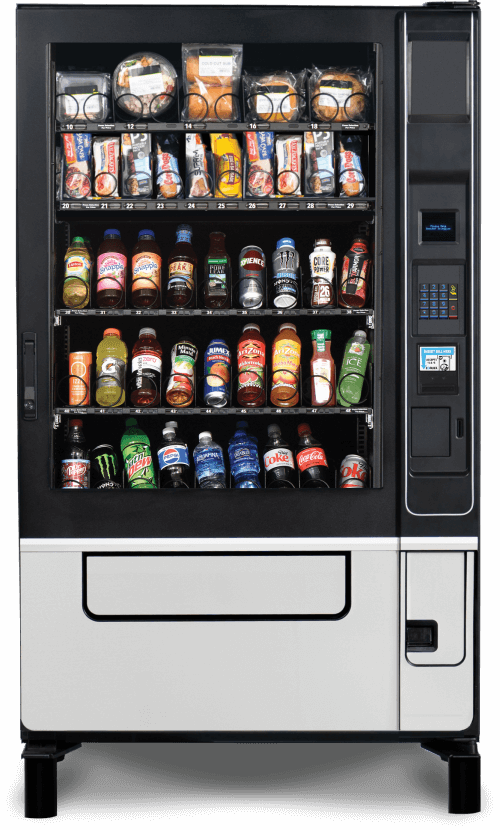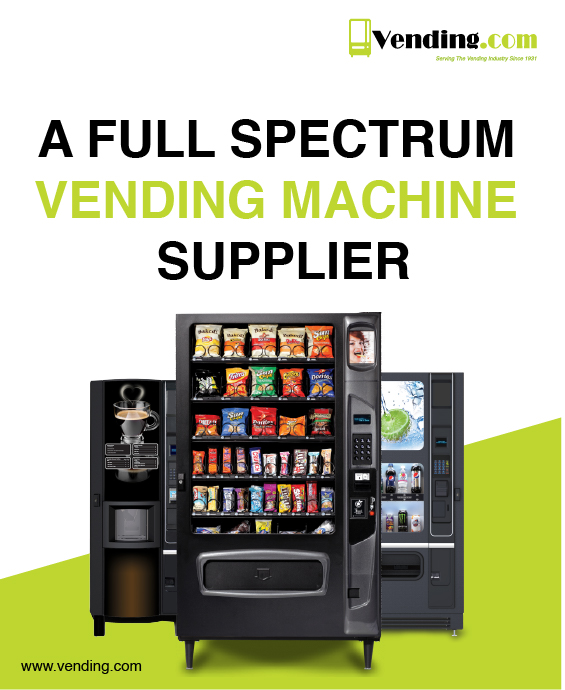Buying a vending machine is easier than ever before.
Everybody must have experienced the fun of buying something from a vending machine to just see it spit out the product you chose to buy. Owning a vending machine can be even more fun and rewarding. Nobody will mind an alternate source of revenue from vending machines. There are several stories where what started as a side hustle became a thriving vending business.
Investing in a vending machine can improve the experience of the customers or visitors of your establishment. Customers will find it convenient to wait with a beverage until it is their turn to be served. Businesses can also use vending machines as another channel for the sales of products relevant to their business.
Investing in a vending machine is simple when considering the following five aspects before making the purchase.
Finding the right location
One of the most important factors to consider for your vending machine is the location. If a machine is purchased for your own business, customer accessibility is a critical consideration. If a machine is difficult to access, it will have a difficult time generating cash. Additionally, if you are looking at an outdoor location, it is important that your machine has the correct specs to accommodate customers.
If you place the machine at a location owned by someone else, then you will need to consider things like partnership expectations, such as commissions, rental fees or custom branding on the machine. Vending is a numbers game. The more people looking at your machine will result in more revenue for you.
Selecting the right products to sell
The numbers for 2019 point to packaged snacks and food items as the most sold products in vending machines. Beverages come in at a close second, leaving everything else eating their dust, but this is still a generic classification. You need to be more specific as to what you want to sell. Some products give you razor-thin margins, while others are more rewarding.
A good example would be a chocolate bar. The average gross markup on a bar of chocolate would be 46% over the list price. Considering you must still cover your logistics, energy, location fees, insurance, and other costs, this is not much. On the other hand, the humble bottle of water might give you a tidy 85% markup. The logic is simple when you need water, you need water. A chocolate bar can always wait.
It is not just the markup. It is also about the demand. Pick products that move fast. The cost of products staying in the machine is often unnoticed, but can be very costly. M&Ms might fly off the machines at a waterpark, while a yogurt cup may not. The product to location ratio is everything in the vending business.
Investing in a machine
If you know what to sell and where to sell it, all you need to do is pay for it, but this is where most operators are stuck. While some operators can dig into their operating income or personal savings to buy a machine, others cannot. However, the good news is that reputed vending machine manufacturers have made it easier for such operators to buy their machines. They offer several options like the ones listed below.
- Cash purchase: If you have the cash and you are willing to use it to buy a vending machine, then it is straightforward. All you need to do is find the proper manufacturer or seller who will give you a machine that costs you less to buy and to own.
- Financing: Buyers can also obtain financing support to buy their machines. Depending on the business case, the manufacturer of the machine might offer attractive interest rates or other benefits to encourage the purchase. Individual operators trying to create an alternative source of income often find this appealing, as they can invest in the latest technology without large upfront costs.
- Used: Beginners can also try used machines. They come at a much lower upfront cost, however, the cost of maintenance and upkeep of these machines will depend on the quality of the machine. If the machine is already old, over-used, or faulty, the cost of owning the machine might become high. It is essential to buy used machines from businesses of good reputation to avoid future surprises.
Installation and Setup
The machine’s installation and setup are often covered by the manufacturer when you buy a new machine. If you buy a used machine, however, ensure that you calculate the setup cost. Other than costs, installation and setup also require skills. Configuring your machine for the products you sell, providing proper payment interfaces, connecting to software inventory management systems if there is one, and other aspects of installation might need professional support. Buying new or used machines from reliable businesses can help you address these needs. They often provide the necessary support.
And you can rest assured knowing that our dedicated service entity covers all installation, setup, and setup requirements. Vendnet also supplies all spare parts and hardware along with easy-to-use manuals for all our models that help in DIY troubleshooting.
Stocking
Once you have the machine up and running, all you need to do is stock your machine. If you have already decided on your product, make sure you buy fresh stock. Ensure that the products are worth the price your consumers are paying. It is vital to have quality products as it impacts consumer experience. Only a happy consumer will buy again from the same machine. Also, ensure that you have the necessary mechanism to keep your machine stocked. An empty machine continues to cost you without generating revenue.
A vending machine can be your steady stream of additional income. The past two years have taught us that even a strong market or economy can be fragile. Investing in vending machines can reduce risks to your income. Operators who carefully consider the above mentioned aspects and buy from reputed sellers are wise. They minimize the upfront capital expense and optimize the cost of owning the machine while also reducing risks. Our specialists at Vending.com can assist you through your purchase of a new or used vending machine. Our offers are simply icing on the cake that you simply cannot resist. Talk to us at 1-855-929-1042 to know more.


